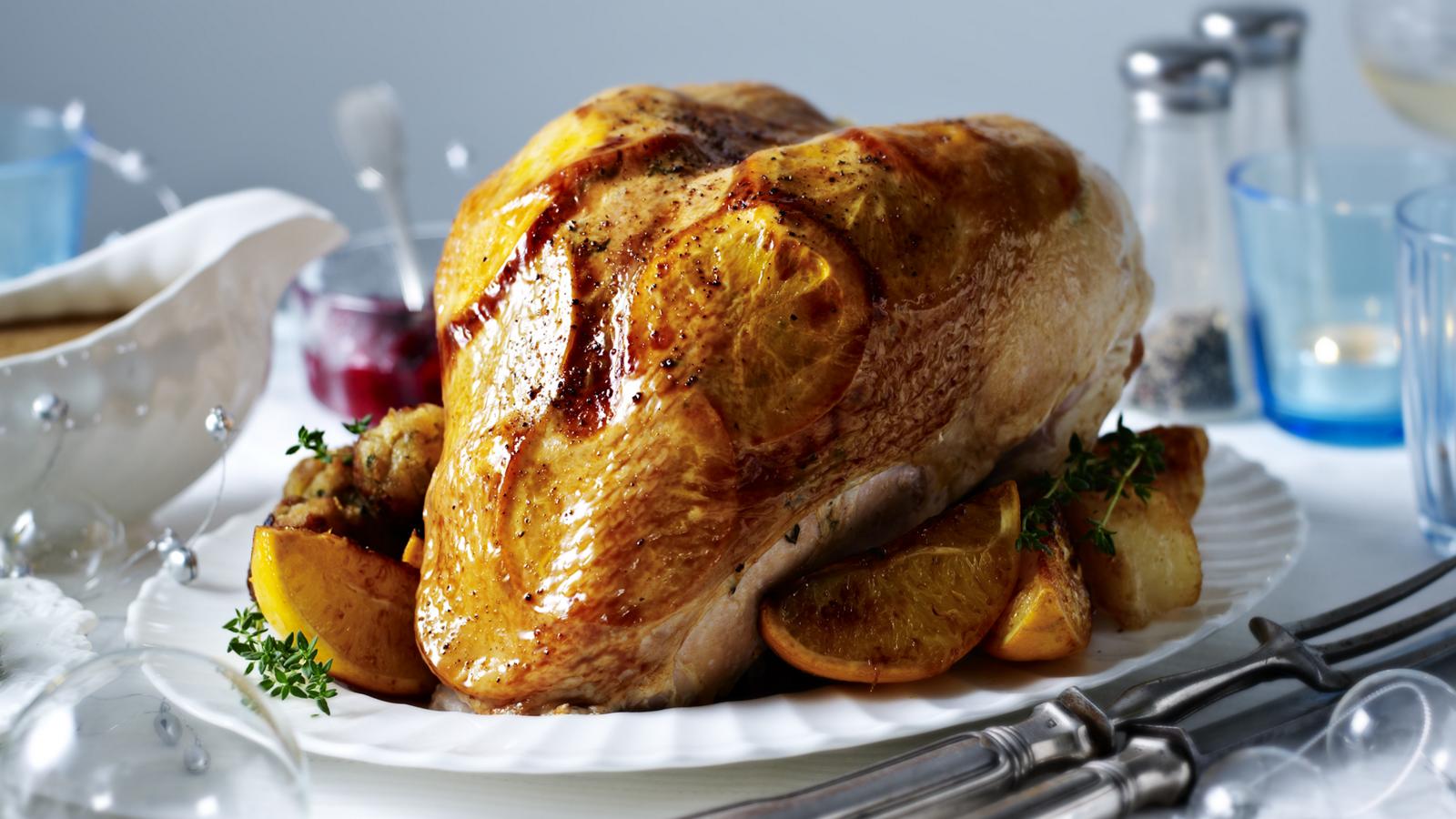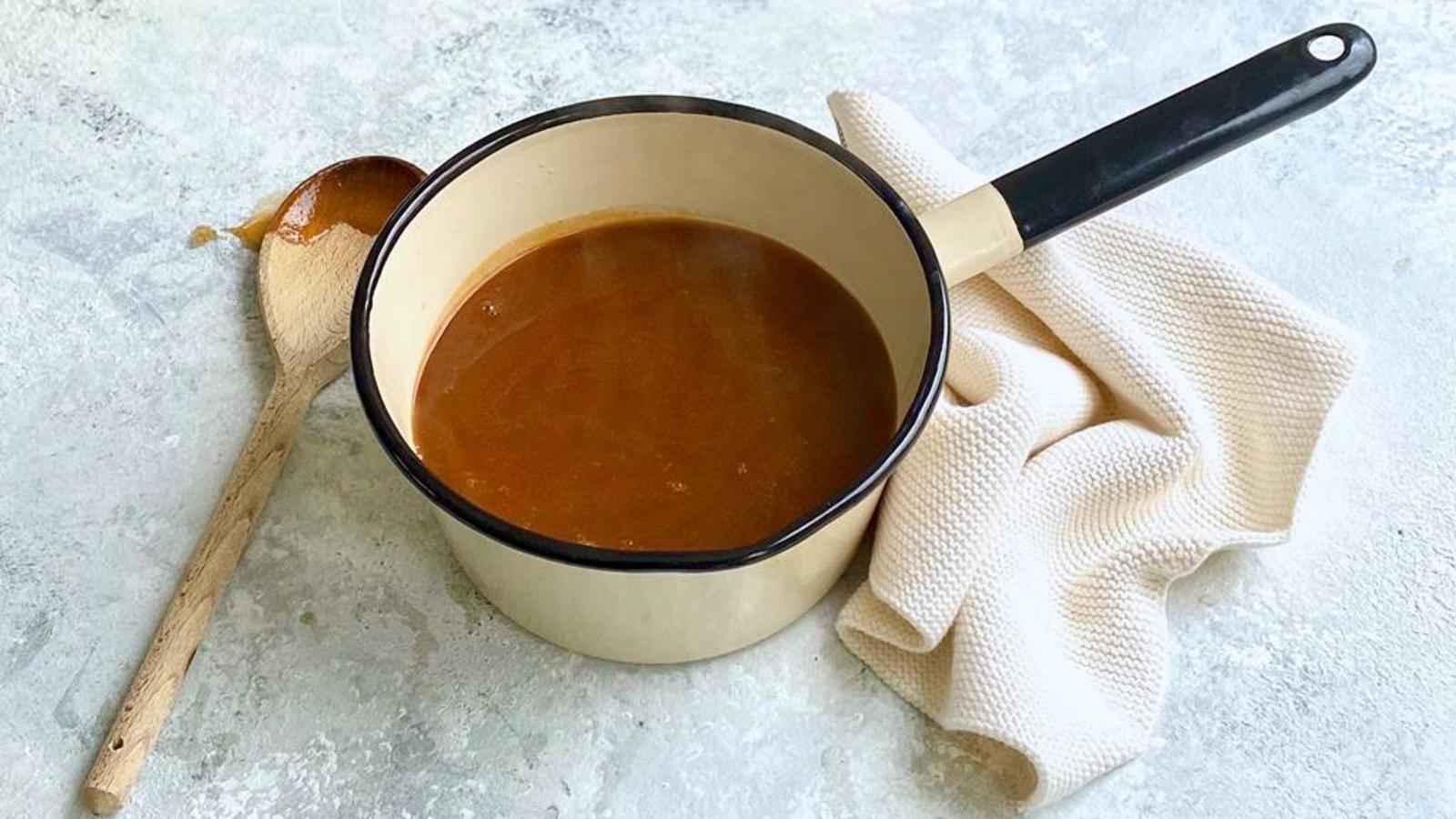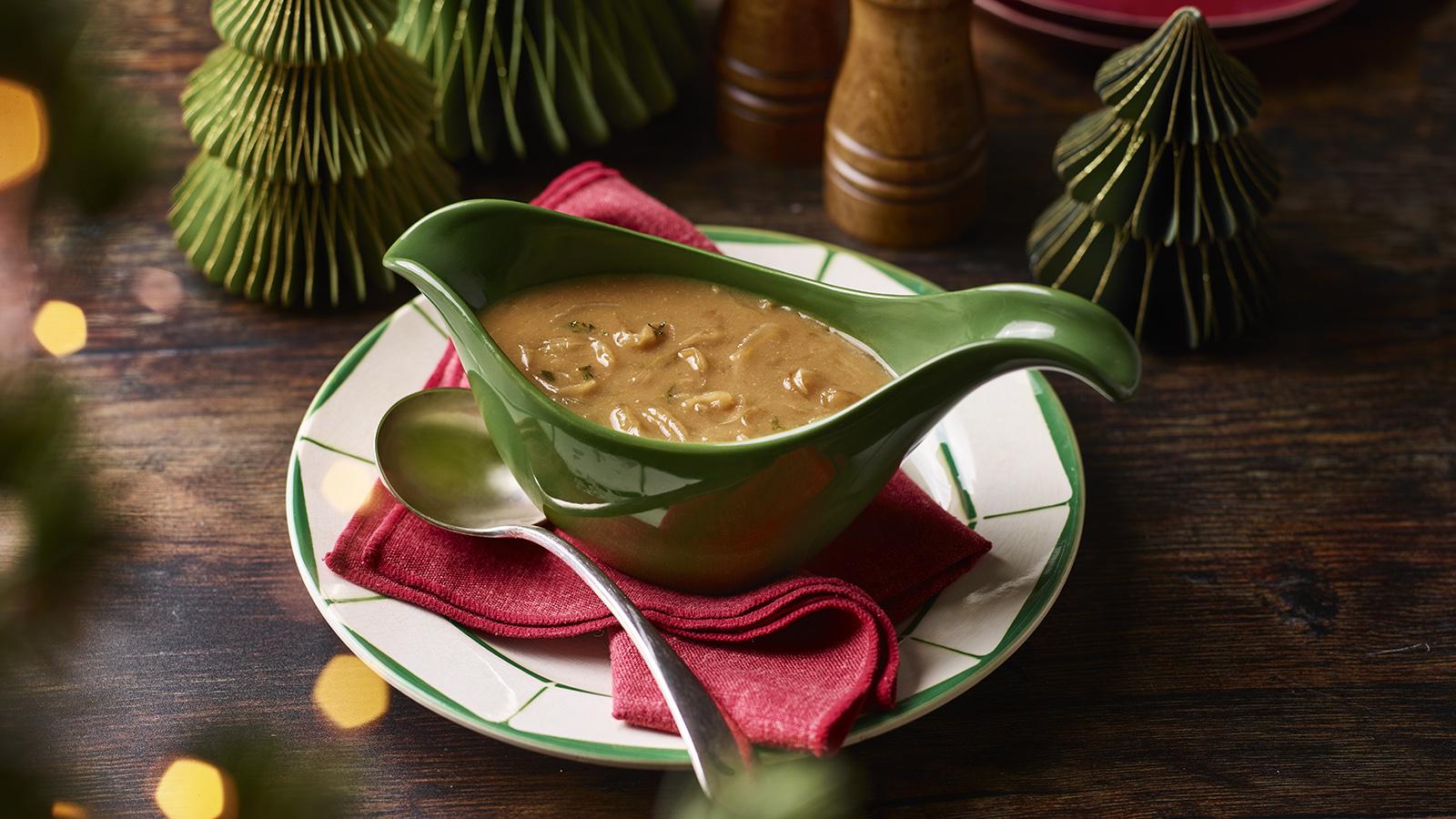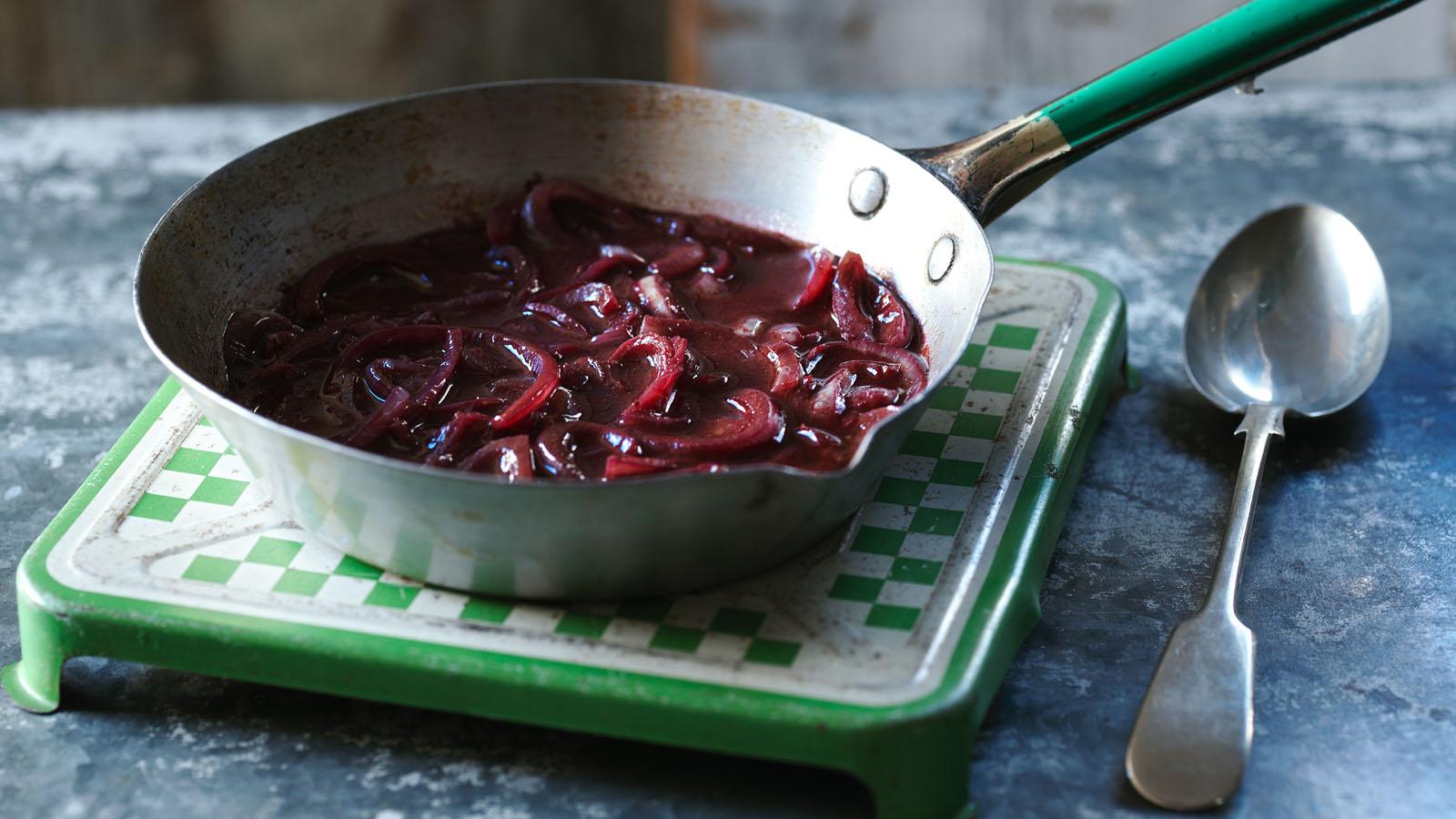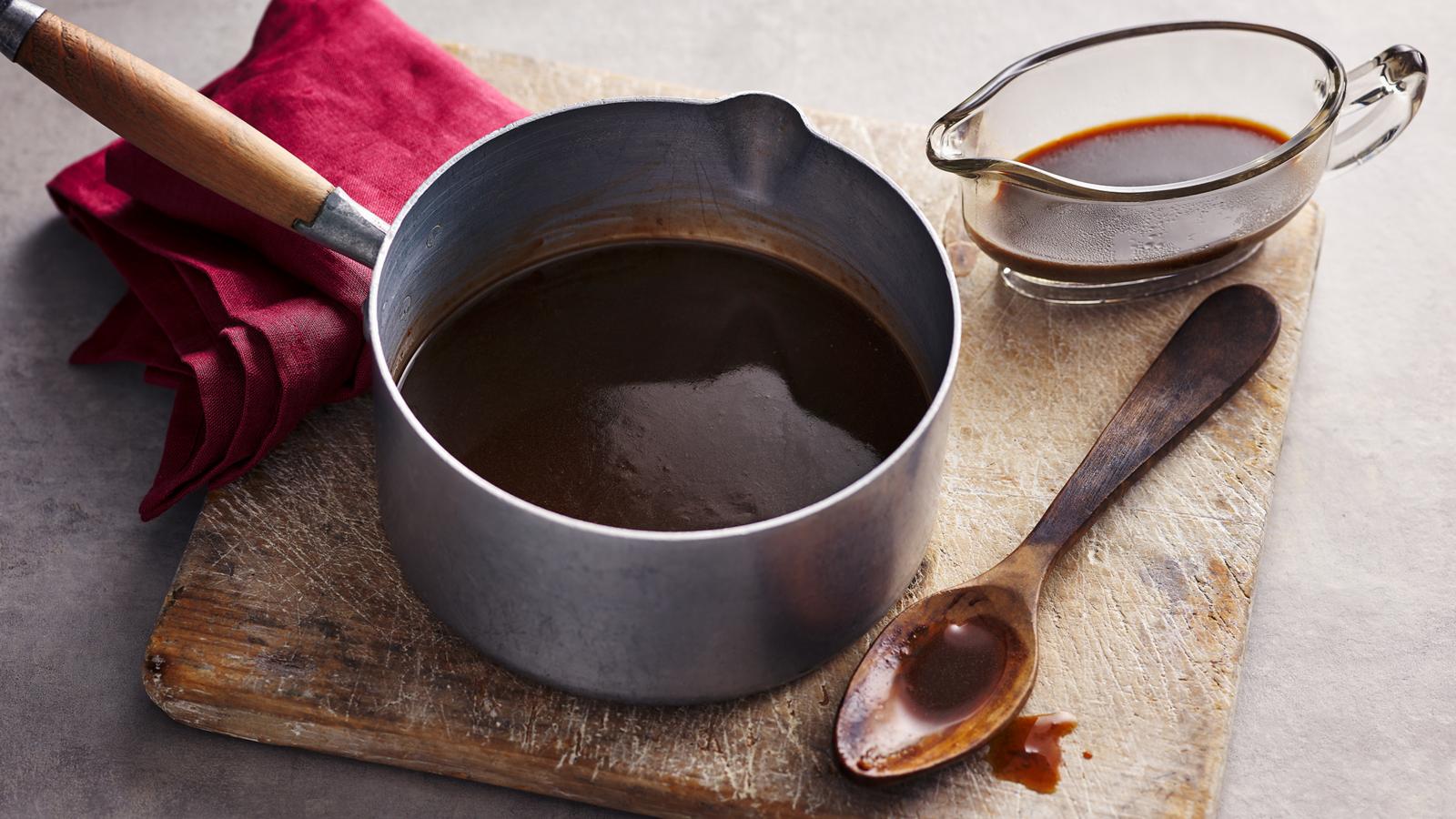Turkey gravy
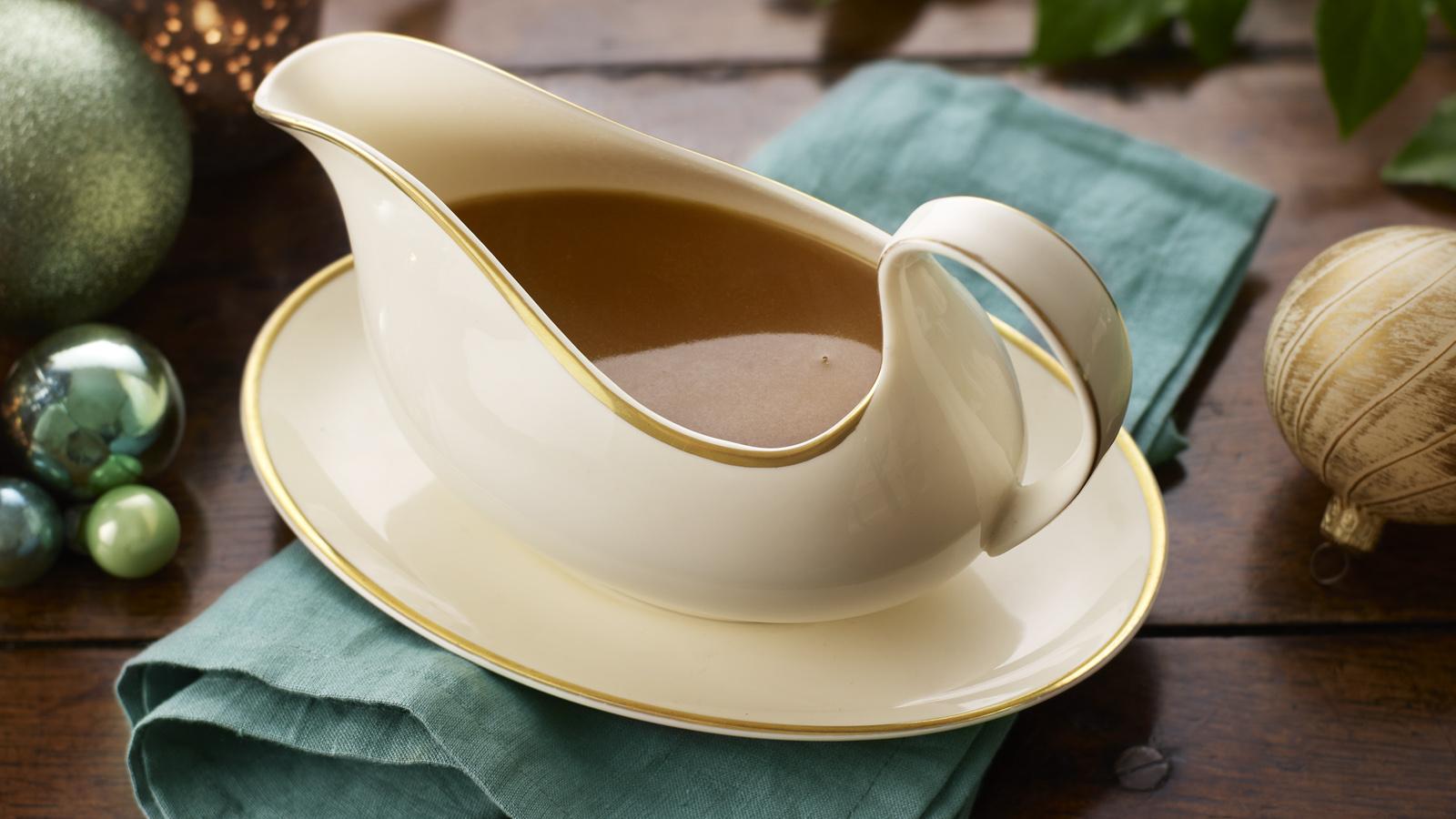
- Prepare
- less than 30 mins
- Cook
- 30 mins to 1 hour
- Serve
- Makes 2 pints (serves 6–8 people)
Make your Christmas turkey gravy a thing of beauty with this simple recipe. Prepare steps 1–2 in advance to make life easier on the day.
If you have bought a turkey crown that doesn't come with giblets, you can either buy them separately (they are usually very cheap from butchers) or use readymade stock and start at step 3.
Ingredients
- turkey giblets
- 1 bay leaf
- 1 sprig of thyme
- 4 black peppercorns
- ½ onion, sliced
- pan juices from the roast turkey
- 25g/1oz plain flour
- salt and pepper
Method
Place the giblets in a saucepan and cover with 1.2 litres/2 pints water. Add the bay leaf, thyme, peppercorns and onion. Bring to the boil and skim off any scum. Reduce the heat and then simmer for 45 minutes.
Strain the stock and measure 750ml/1¼ pints. Set aside.
Spoon off most of the fat from the roasting tin, leaving the turkey juices. Add the flour and blend with the juices over a gentle heat until it turns golden brown and it has a smooth texture.
Slowly start adding your stock, a little at a time, scraping the tin (or pan) with a wooden or silicone spatula to lift up and incorporate all the tasty juices. Bring the gravy to a simmer, stirring constantly.
Simmer for 3–4 minutes stirring all the time to remove any lumps and until the gravy thickens. Season to taste and serve.
Recipe tips
You can prepare this turkey gravy ahead, if you remove giblets from the turkey the day before and make the basic stock. Allow to cool thoroughly, chill until the turkey is roasted, then continue as above.
What is the secret ingredient for good gravy?
The secret to a good gravy is lots of meat juices and a decent stock. A whole bird will produce more juices than a crown or breast joint. Chicken or turkey stock work well. You can make home-made turkey stock using the giblets as in the recipe above, or you can buy it.
When you’ve roasted your turkey, remove it to a board or serving platter to rest while you make the gravy. All the brown, sticky juices that are in the roasting tin are what you need to make a good base for your gravy. (Use a nice sturdy roasting tin, so it can go on the hob, or you’ll need to transfer all the juices to a saucepan.)
Serve in a warmed jug, to help keep the gravy warm.
What to do if the gravy gets lumpy?
If your gravy goes lumpy, simply pour it through a sieve into a clean saucepan and return to the hob. Bring back to a gentle simmer, stirring, then serve as normal.
How to make turkey gravy taste better?
Try frying a sliced onion in a little butter before adding the stock for an extra rich flavour. Strain through a fine sieve before serving.
After adding the stock, you can add a dash of wine, port, or red currant jelly, if you like.
Make sure you season well with freshly ground black pepper and salt. Supplement your home-made gravy with a spoonful of turkey gravy granules to add a richer flavour and colour, if you like.
How to darken turkey gravy?
To deepen the colour of turkey, or any gravy, use a few drops of gravy browning. It is sold in small bottles in some supermarkets and online. A little dark soy sauce makes a good alternative and a teaspoon of yeast extract, such as Marmite, can also help.
What is the best thickener for turkey gravy?
If you want to thicken a turkey gravy you’ve already made, it’s best to do it with cornflour. Simply put a tablespoon of cornflour in a small bowl and stir in a tablespoon of cold water. Mix until smooth. Stir into your gravy, a little at a time, until the right consistency is reached. If it’s still too thin, do the same thing again.
Alternatively, you could mix equal amounts of softened butter and plain flour (known as a beurre manié). Roughly 2 tsp of each works well. Drop small balls of the paste into the gravy and whisk well. It won’t give such a smooth result as cornflour but will help thicken the gravy. You’ll need to pass the gravy through a fine sieve at the end, to remove any stubborn lumps.
If your gravy is too thick once you’ve made it – or you want it to stretch a little further – add extra stock or water. You can make the stock with a chicken stock cube if you don’t have any turkey stock left.
How long does homemade turkey gravy last?
Homemade turkey gravy will keep well in the fridge for a couple of days or can be frozen for up to 3 months. Pour cooled gravy into a lidded container, leaving a gap of around 2cm/¾in at the top to allow for expansion. Cover, label and freeze. Thaw overnight in the fridge and either reheat in a saucepan over a low heat – adding an extra dash of water if necessary – or in a microwave for 2–3 minutes, stirring halfway. Gravy should always be reheated until piping hot.
If you also have leftover turkey from Christmas, you can make into mini roasts for another time. Simply carve the turkey and put into lidded containers – use toughened glass such as Pyrex or foil. Pour leftover gravy generously over each portion, to help keep it moist, then cover, label and freeze for up to 2 months. When you are ready to serve, simply reheat in a microwave or oven from frozen until hot throughout.
